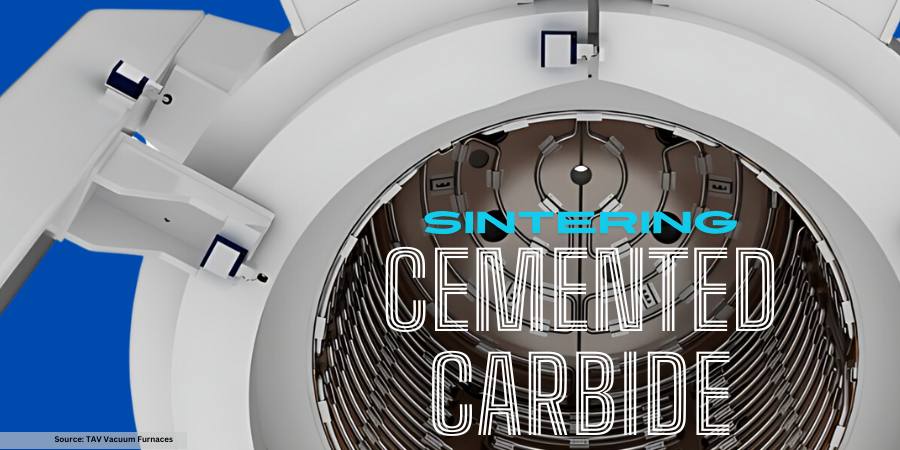What is a digital twin, and how does it relate to the heat treating industry? As noted by Mike Löpke, "The quality of the product is the most important aspect," and such quality can be supported by a digital twin.
This article is set to be published in Heat Treat Today's November 2023 Vacuum Heat Treat print edition. While awaiting the release of the November issue, catch up on previous digital editions here.
By definition (see Grieves and Vickers, 2002), the digital twin is a virtual representation of a material or immaterial object of the real world that does not necessarily exist, for example, a representation for the design phase of a machine. As the concept of digital twins is universal, it can often be applied to almost everything: machines, tools, processes, human capital, production and products, quality key performance indicators (KPI),and much more. With design driven by use case*, digital twins deliver all required data, functionalities, and information primarily to accomplish a given task and to fulfill its use case-related purposes.

Digital twins require at least these three important elements: an object in the real world, its digital representation, and their connecting information which is continuously updated in real time. The characteristics of this information are various and include all kinds of data sources (e.g., process data, master data, meta data, or enterprise resource planning data); additionally, algorithms and applications in general may help to enrich this information.
Digital twins can be part of the supply chain throughout the entire lifecycle of products, machines, processes, or services and offer different value and advantages at each stage. Already applied in the design phase, a digital twin can handle complex product requirements or fast cycles of development and test different designs with specific simulations to make physical prototyping more and more redundant. This results in time and cost savings in the development of new products and optimizes aggregates and processes already in the design phase. Simulating functionalities and behavior in respect to every relevant aspect lowers the degree of uncertainty. Since all functionalities can be simulated, commissioning is easier, and processes are free of error.
Another use case of digital twins is provided by their holistic view on data. This offers the possibility of monitoring and reducing risks which may lead, for example, to a rise in the overall availability of a machine or a process line. Robust prognoses regarding the properties, the quality, and the behavior of products and machines can be identified as well as replacement planning and investigations of upcycling potentials. The concept of the digital twin leads to a holistic view on products, machines, processes, and the entire supply chain in real-time. This makes communication between suppliers, producers, and customers easier since they share the same level of knowledge.
In the heat treatment industry, the most prominent and important use case is the digital passport of a product. Since a lot of parts, especially in defense or aerospace, need to meet special requirements and quality gates, a digital passport of these parts contains all the certificates paired with the material, process, and quality data. The advantages of such a passport are obvious: it provides all data in a universal and transparent way. There are official initiatives, for example, by the Institut für Werkstofforientierte Technologien in Germany, to create a common design and interface, and also to define mandatory information such a passport should offer. Currently, the driving aspect is carbon footprint and other ecological measures.
Besides the aspect of data and information, the digital data twin of a part can be enriched with suitable applications, such as process simulations and material calculations. Having a full picture of the current state of the part allows heat treaters to simulate different process routes to achieve given specifications or execute virtual stress tests and benchmarks. Additionally, when a process is disrupted or does not perform as expected, it is possible to adjust recipes for the parts involved. By measuring or simulating the state and conditions of those parts, new starting criteria for a rerun or continuation can be determined. This helps to reduce costs by avoiding downgrading or scrapping products.
Another prominent use case is the digital twins of assets (e.g., furnaces, probes, or other auxiliary tooling). Monitoring the asset health by gathering empirical and statistical information is a good starting point to enrich the virtual representation of an asset with empirical or machine learning-based models. This provides for asset health predictions which lead us to the concept of predictive and prescriptive maintenance.
The quality of the product is the most important aspect. The quality of a product is defined by the asset health and its state, the starting conditions and properties of a part, and (last but not least) the knowledge and execution of the process. And so, to apply and master the concept of digital twins for these three aspects will mean taking a huge step forward towards predictive quality.
*use case = a written description of how users will perform tasks on your website. It outlines, from a
user’s point of view, a system’s behavior as it responds to a request. (Source: Usability.gov)
About the Author:
Mike Löpke, the head of Software & Digitalization at Nitrex, has a background in Mathematics and Physics, as well as substantial knowledge in R&D and metallurgical modelling. With expertise in AI and process prediction, he has led Nitrex to develop the very first IIoT cloud-based platform (QMULUS) and is currently in charge of Nitrex’s Software and Digitalization department. His thirst for knowledge enables him to remain ahead of evolving technology.
For more information:
Contact Mike at Mike.Loepke@nitrex.com.




